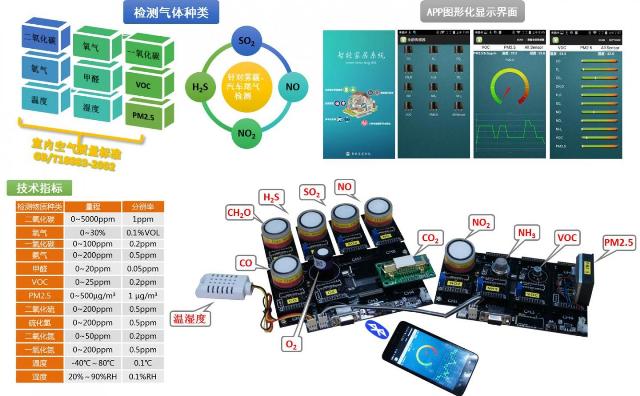Feb 4 2016
As a core communication device, the mobile phone is becoming increasingly popular in our daily lives. A wide variety of functional units and friendly operating systems make mobile phones eminently suitable for smart technological applications, and mobile phones have also attracted the interest of scientists.
 These are photographs and results from our homebuilt smart home system. (©Science China Press)
These are photographs and results from our homebuilt smart home system. (©Science China Press)
Recently, sensing applications at multiple scales, such as personal, group, and community sensing, have been developed. Sensing software is increasingly being developed for smartphones, providing both convenience and pleasure (e.g., angles in pictures and photos can be measured using the smartphone measurement app Partometer). Many people have played such camera measurement tools downloaded from ''Google Play'' (http://www.new-itechnologies.com/, http://www.vistechprojects.com/). Above all, to safeguard people's health, much effort has been directed toward using mobile phone sensing devices for physical examination and environmental monitoring. Examples of such sensors include those measuring the ultraviolet index, those used for health monitoring (e.g., heart rate, respiratory rate, and blood oxygen saturation), and those used for air monitoring, ultrasonic scanning, three-dimensional (3D) scanning, and the detection of chemicals.
In a review published in 2016(3) issue of Science Bulletin, the fabrication and application of mobile phone sensors are presented. For example, inertial magnetic sensors, earphones, cameras, and Wi-Fi or 3G all play important roles in mobile phone sensing.
Smartphone sensors can be classified as electromagnetic sensors, audio-frequency sensors, optical sensors, electrochemical sensors, and other sensors. The future development of smartphone sensing and perspectives are also summarized in this review.
A smart home system have been developed by Prof. Niu's research group, which consists of a homebuilt electrochemical workstation, gas sensors and a mobile phone programmed with specific software. CO2, CO, O2, NH3, formaldehyde, VOC, PM2.5, SO2, H2S, NO2, NO, temperature, humidity can be detected by smartphones and instantaneity transferred to Internet (Fig. 1). It can communicate with the Internet for information exchange and communication achieving intelligent identification, monitoring and management. The internet of things will be widely applied in industrial production, smart home, intelligent security, environmental protection, medical diagnosis, and biotechnology.
The development of smartphone sensing depends on different technologies (microelectronics, software, and communications). In the future, mobile phone devices will benefit from (i) having better operating systems to achieve data acquisition and processing by inexperienced users, (ii) improvements in access point technology for increased processing power processing and reduced power consumption, (iii) improved smart display technology with more power efficiency and flexibility, (iv) new sensor types being integrated into smartphones to acquire various new physical quantities, (v) faster battery charging, wireless battery charging, and adaptive battery management, (vi) advances in material technology to enable a new generation of lighter, more flexible, and durable devices, (vii) trends in Web technology to make data transformation more universal, convenient, and rapid, (vii) expansion of cloud service to permit online data storage and data sharing between different users, (ix) the development of user interfaces that can use gestures and retina tracking, an infrared keyboard, and context-aware user interfaces, and (x) faster and safer mobile network capabilities.